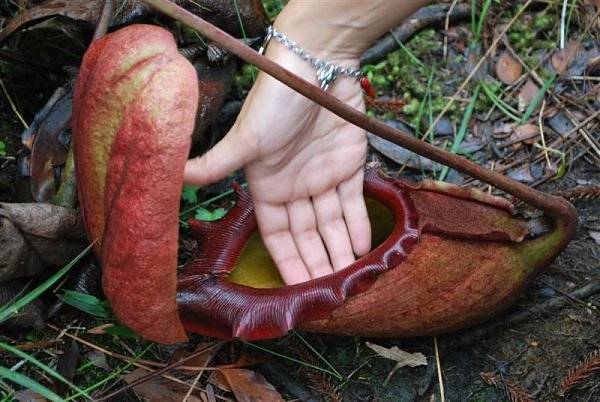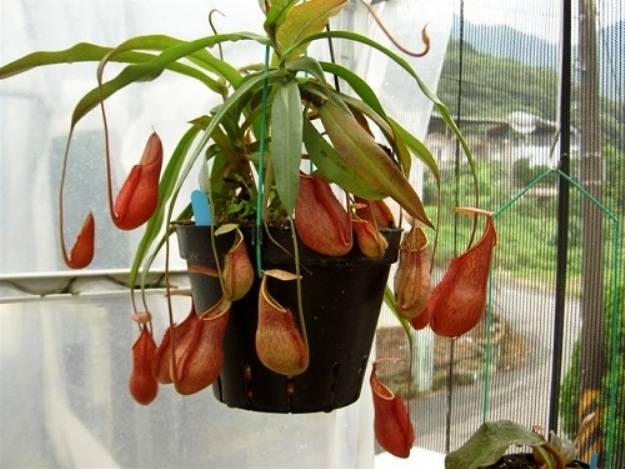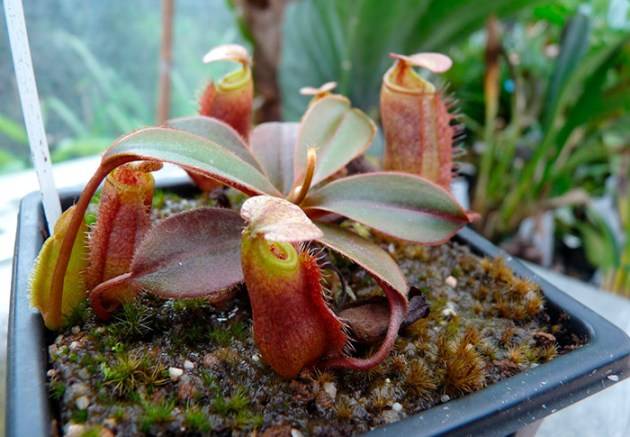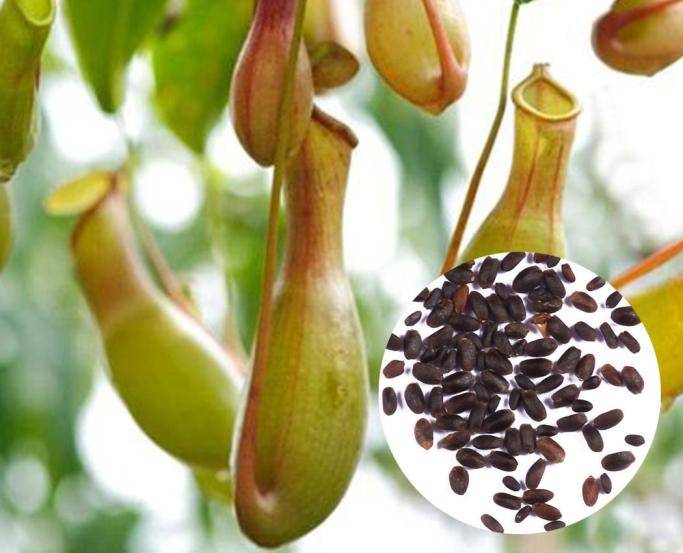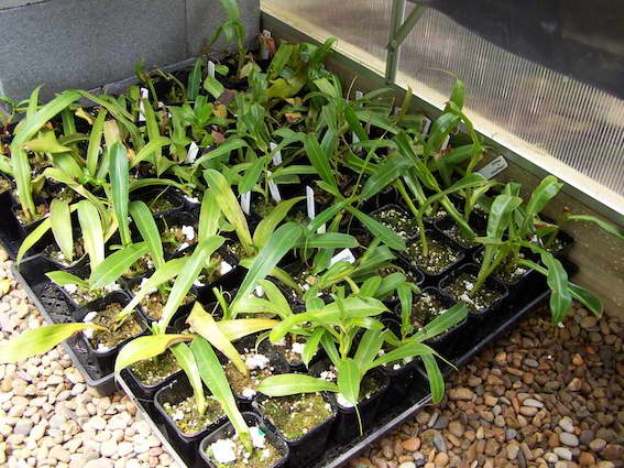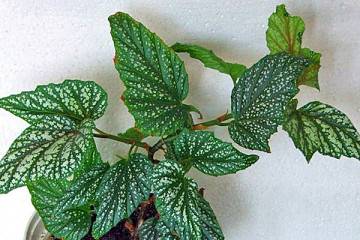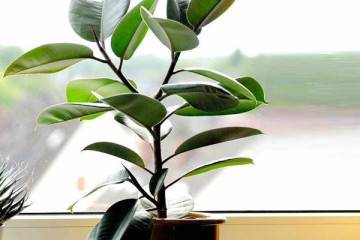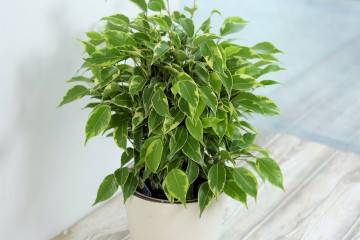Nepentes - care and maintenance of a flower at home
Content:
The amazing nepentes flower, which many have heard of, but rarely saw, has other names. Nepentes is called a predator plant, as well as a flycatcher and a pitcher. And all thanks to the properties of the plant and the way of existence. The flower attracts the attention of exotic lovers, but breeding at home is a laborious process. Taking care of a flower is not easy. Therefore, few people take up growing it in an apartment.
Nepentes - what is this predatory flower
The pitcher is part of the Nepentov family. There are 7 officially recognized and 247 unofficial species in the genus.
The homeland of the plant is New Guinea, Madagascar, the lands of the Philippines and Sumatra. Today the habitat is Sri Lanka, Malaysia, northern India, the islands of the Pacific and Indian oceans.
A short description of nepentes, what it looks like
Nepentes is an evergreen vine up to 20 meters long, which sometimes grows as a shrub.
The plant has green oblong foliage with rounded ends. The length of each leaf is up to 30 cm. Small hanging jugs of various colors with specks or stripes are available.
Each of these jugs has its own lid that protects against rain and debris. The flowers are small, inconspicuous, brown or greenish.
At the bottom of the jugs there is aromatic nectar released by the walls. It attracts the attention of insects, which crawl in and drown in the sweet liquid. And the plants absorb the dead insects and thus receive organic fertilizing in addition to the nutrients obtained from the soil.
Varieties of nepentes
The plants below are most often found at home.
Nepentes Winged or Alata
An attractive predatory vine with four-meter stems and light green, sessile leaves.
Grown indoors as an ampelous flower. Nepentes Alata is distinguished by a variety of jugs of different colors, 18-25 cm high.
Nepentes Raja
A huge carnivorous plant with large jugs. Each of them holds 3.5 liters of water and 2.5 liters of digestive fluid.
Large, brownish-burgundy traps creep along the ground and, in addition to insects, hunt vertebrates. The height of the jugs is about 40 cm, the diameter is 20 cm. They are located on thin flexible combs. Rajd's leaves are green.
Nepentes Hookeriana
A hybrid named after the botanist Joseph Hooker, who compiled a detailed description of it.
The plant is used for home cultivation. Under comfortable growing conditions, suitable temperature and humidity, having passed the initial stage of development, the flower will show its best in the future.
Nepentes Jug
Prefers a swampy climate.
There are no special requirements for the content. It develops well at home.
Nepentes Sanguinea
It is developing rapidly.The leaves are evergreen, glossy.
The pitchers are medium in size, up to 20 cm high, in adults they are much larger. Traps of different colors and shades.
Indoors, flowers are hung in pots, which causes the jugs to hang down. Proper care ensures a long stay in the home.
Nepentes - home care
Many plant species are capricious. Therefore, caring for a nepentes requires meeting the conditions for keeping a tropical plant.
Illumination and temperature conditions
The best place for a plant is a south or west window. A bright but diffused light is required. Therefore, direct sunlight is excluded. In a similar situation, nepentes are shaded.
When choosing windows facing east or west, you need to provide additional lighting, especially in the autumn-winter period. Nepentes is a tropical plant, so ideal conditions assume that daylight is maintained for 14-16 hours.
The temperature for growing a thermophilic plant is maintained at 22–25 ° C throughout the year.
Watering rules and humidity
Like any tropical plant, the flower prefers abundant watering and high humidity. The soil is constantly moistened, but liquid stagnation must be excluded.
Watering is carried out with settled water, at room temperature. The best watering liquid is rain or melt water. The pot must have a drainage device. In winter, they water less often, but they monitor the state of the earthen coma so that it does not dry out.
Nepentes is sprayed only until the jugs appear. If this rule is violated, water gets inside the jug, leading to changes in the digestive fluid. As a result, insects die, but are not digested, but rot inside the traps. In this case, the flower does not receive organic matter.
Depending on the type of nepentes, the humidity varies between 40–90%. If necessary, it is increased thanks to a pallet with wet pebbles or peat, and the foliage is carefully sprayed with water.
Feeding nepentes than feeding a plant
To feed a mature plant during the growing season, use mineral fertilizers with a low nitrogen content. They are fed twice a month.
For foliar dressing, a remedy for orchids is used, but the dosage is reduced by 3 times. Sprayed twice a month. Do not let the solution get on the jugs, but only moisten the leaves.
Organic matter is brought directly into the jug. It could be a fly, a mosquito, or a butterfly. The procedure is carried out carefully so as not to overflow the liquid from the trap. If this trouble occurs, add distilled water in a small amount. But it is not recommended to place insects there.
Transplant and size of the flower container
The predatory nepentes is transplanted once every 2 years. If the rhizome is growing rapidly, transplanted annually. The procedure is carried out in the middle of spring, using the transshipment method.
The soil is purchased in the store. Orchid soil is a good option. More often, the soil is made independently from the following components:
- sphagnum moss;
- coconut fiber;
- crushed pine bark;
- peat;
- quartz sand;
- perlite.
The components are taken in the ratio: 4: 3: 3: 1: 1: 1. The contents are mixed and disinfected in the oven for 20 minutes at a temperature of 200 °.
The nepentes is transplanted into a pot, increased by 30 mm in width. The bottom is covered with expanded clay or pebbles. This is followed by a small amount of prepared soil, where the roots are immersed. The remains of the soil are laid in a circle around the roots, compacted and mulched with moss.
Flower pruning and winter dormancy
Pinching and pruning are mandatory procedures for crown formation. The first pruning is carried out when the sixth sheet appears. Long loops and shoots are removed, supports are installed. Their flower will twine around.
From early October to February, nepentes is dormant. At this time, the flower is not watered and the feeding is reduced.
How Nepentes reproduces
At home, a flower can be propagated in several ways, which are chosen by the florist.
- Seeds
This method is rarely chosen, as it requires a lot of effort and time, but does not always lead to success.
The bottom of the container is covered with cleaned moss. Seeds are distributed, moistened and covered with a film. Maintain humidity in an artificial greenhouse up to 90%, temperature - up to 20 ° C. Above include phytolamp for 12-14 hours a day.
2-3 leaves are waiting for the appearance and dive into individual pots.
- Apical cuttings
Propagation by cuttings is a simple and effective method. It is carried out in the spring, when the first leaves have already appeared on the shoots.
A stalk with 3 leaves is cut off, treated with foundation, planted in the ground. Close the top with a glass jar or plastic bottle. Maintain temperature and humidity. Ventilate and spray regularly.
- Air layering
The method is as follows. A container with soil is placed near the flower pot. The long shoot is tilted and fixed so that it lies on the nutrient soil. Moisturize regularly.
After 2-3 weeks, roots are formed on the process. They are separated from the main individual and planted in pots.
- Root layers
The reproduction method is carried out during transplantation. The root system is divided into parts, which are rooted in separate pots. The method requires experience and knowledge. When dividing a bush, you can injure the roots.
Life span of nepentes
According to the reference literature, the pitcher in captivity lives for a year and a half. However, flower growers noted cases when nepentes lived up to 3-5 years. It all depends on the conditions and care.
Blooming nepentes, how often does it happen
In apartment conditions, the carnivorous plant nepentes rarely blooms. But if it blooms, then it forms small flowers, gathering in large inflorescences. They are almost invisible because of the large jugs.
With poor care, the flowering period is disturbed.
Predator rearing problems, diseases and pests
Nepentes pests are rare. More often, the plant is sick due to improper care.
Growing problems:
- Fungal diseases appear against the background of errors in watering and high humidity. The disease is determined by brown spots on the leaves. For treatment, they are treated with fungicides.
- If the leaves turn yellow and fall off, the problem is insufficient moisture or improper temperature of the content.
- From an excess of liquid, the roots and leaves rot, and the stems turn black. To save the flower, they take it out of the pot, cut off the decayed roots or leaves. The sections are sprinkled with crushed coal and the plant is planted in a new pot with a sterile substrate. And to get a new nepentes, cuttings from a plant are rooted.
- In insufficient light, the jugs slow down in growth or stop forming.
- With defective soil, in which there is only peat and moss, a disease called chlorosis begins.
Among pests, aphids and mealybugs dominate the culture. Insects are removed with a cotton swab soaked in alcohol (60%).
Only with the correct maintenance of the flower, regular care and inspection, an interesting tropical plant will grow, attracting others with its unusual appearance and methods of survival.


